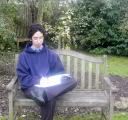Graduate 159: BT 26: Sec. 19
Subdivision B. A Contrast between our Analysis of Worldhood and Descartes' Interpretation of the World
Section 19. The Definition of the 'World' as res extensa
In this subdivision (B), Heidegger tries to illuminate his own discussion and investigation of worldhood by comparing his approach to ontology with that of Descartes. In this section, he lays out Descartes' definition and understanding of the world as 'res extensa' (an extended thing).
For Descartes, the distinction between the 'ego cogito' ('I think') and the 'res corporea' ('bodily thing') is a basic ontological distinction and divides the world into things of 'Nature' and things of 'spirit.' But Heidegger is concerned that the ontological foundation of this distinction has remained unclarified--in spite of the fact that one may be able to site any number of entities as belonging to one or the other of these categories. "What kind of understanding of Being does he have when he defines the Being of these entities?" (BT 123/89) Sometimes 'Nature' refers to the kind of being that belongs to a certain entity (substantiality) and, at other times, 'Nature' is taken just to be the entity being described (substance).
"To determine the nature of the res corporea ontologically, we must explicate the substance of this entity as a substance--that is, its substantiality. What makes up the authentic Being-in-itself [An-ihm-selbstsein] of the res corporea?" (BT 123/90) Heidegger reads Descartes as claiming that substances become accessible in their attributes and that the most fundamental or essential attributes that belong to all bodily entities are those of length, breadth, and thickness--extension. This is so because extension is presupposed in everything else that can be ascribed to bodies. "Extension is a state-of-Being constitutive for the entity we are talking about; it is that which must already 'be' before any other ways in which Being is determined, so that these can 'be' what they are. Extension must be 'assigned' ["zugewiesen"] primarily to the corporeal Thing." (BT 123-124/90) Other characteristics of bodies (for instance, divisio, figura, motus (division, shape, and motion)) are conceived as modes of extension. [1]
"In any corporeal Thing the real entity is what is suited for thus remaining constant [standigen Verbleib], so much so, indeed that this is how the substantiality of such a substance gets characterized." (BT 125/92)
Having laid out, briefly, Descartes ontology of the world, Heidegger will continue with his critique in the next section by looking at the foundations of this ontological definition.
--
FOOTNOTES:
[1] Now I'm just indulging a little practice with my Latin. "...atque unum et idem corpus, retinendo suam eandem quantiatem, pluribus diversis modis potest extendi: nunc scilicet magis secundum longitudinem, minusque secundum latitudinem vel profunditatem, ac paulo post e contra magis secundum latitudinem, et minus secundum longitudinem." "...and one and the same body, retaining it's same quantity [of matter], is able to be extended in many different ways: now certainly [it can be] to a greater extent according to length, and not so much according to width or depth, and also a little later [it may be], on the contrary, to a greater extent according to width and less according to length."
"Eademque ratione ostendi potest, et pondus, et colorem, et alias omnes eiusmodi qualitates, quae in materia corporea sentiuntur, ex ea tolli posse, ipsa integra remanente: unde sequitur, a nulla ex illis eius
--
God is in this place,
And that reality, seen and understood by the grace of God in Christ Jesus through the work of the Holy Spirit, makes all the difference in the world.


0 Comments:
Post a Comment
<< Home